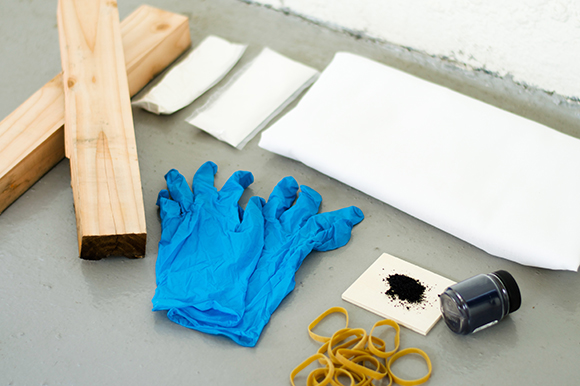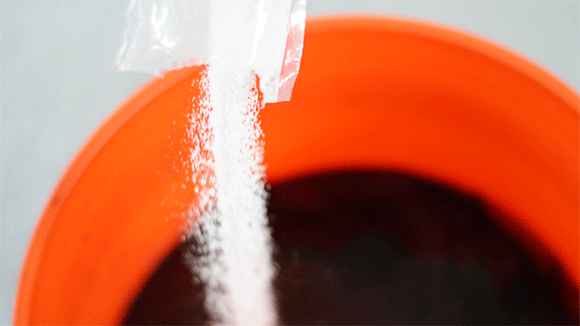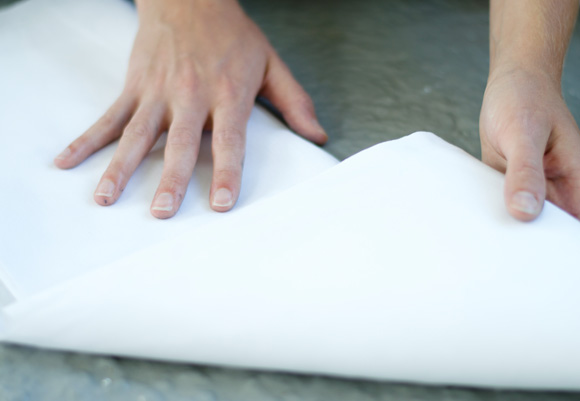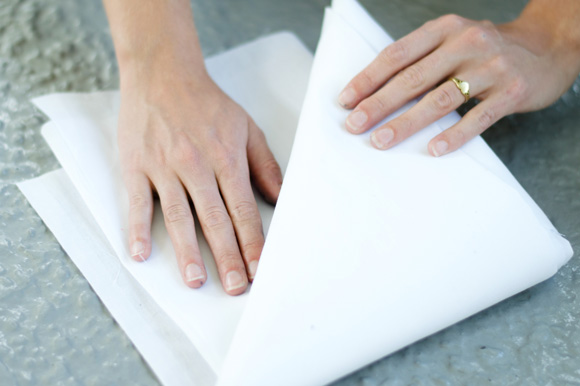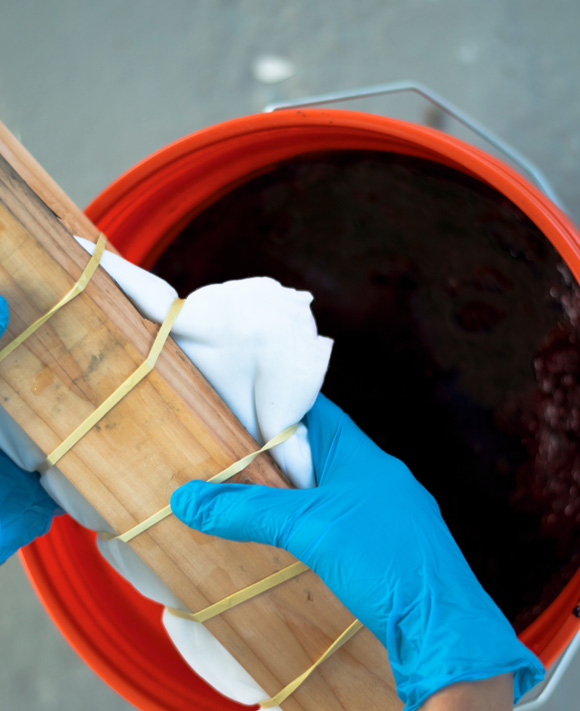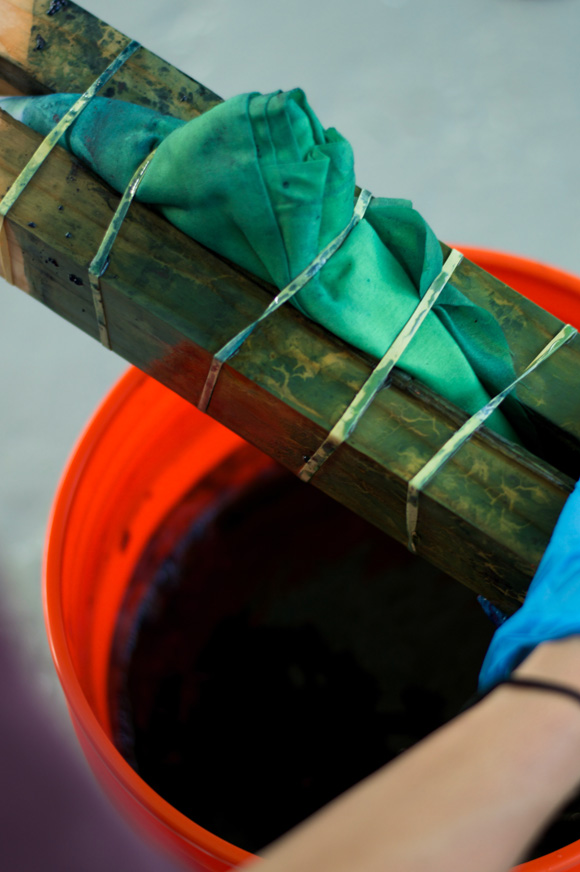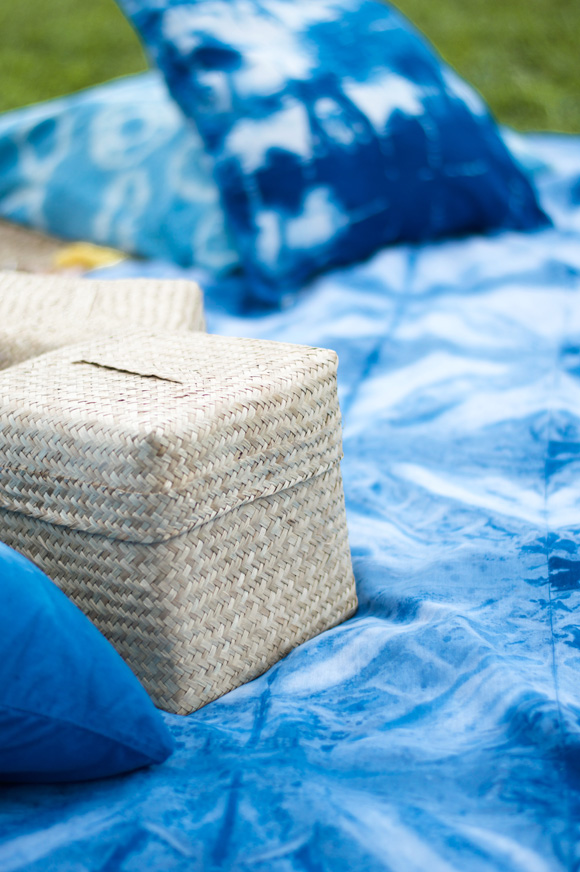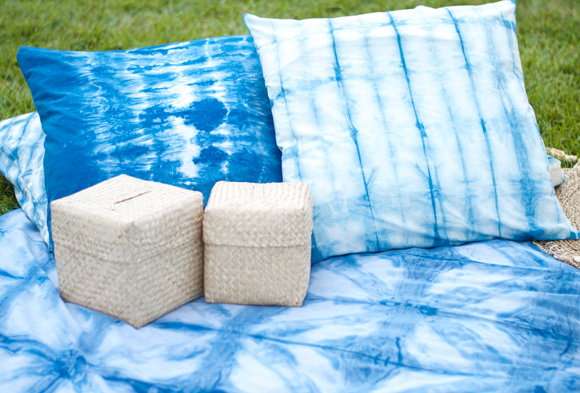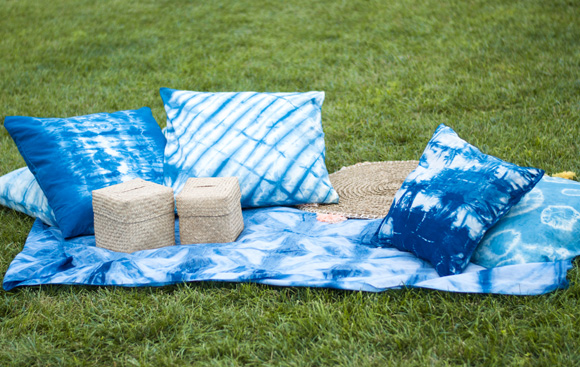Create Your Own Indigo Shibori Picnic Blanket
Learn how to create a beautiful indigo picnic blanket for this summer’s sunny afternoons using shibori dying methods!
This post comes from our blog intern, Natalie!
With the recent drop our new sky-hued collection, all things blue are on my mind. I have always loved the crisp color, especially when paired together with its equally stark counterpart, white. The two colors work together harmoniously whether they are evident in crashing ocean waves, or a partly cloudy sky. My personal favorite way to see them is in the intricate patterns created on linens with shibori dying techniques.
Shibori, or indigo tie-dye as it is modernly classified, dates back to 8th century in Japan. Through a series of binding, folding, or pleating techniques – and blue dye – a beautiful pattern is created.
Since moving to Philly for the summer, I’ve found my favorite weekend pastime to be picnics at the various grassy parks throughout the city. There is something so simple and enjoyable about taking time to relax, enjoy food, and soak in some sunshine. Since I’ve never had an actual picnic blanket to use for this reoccurring activity, I decided making one would be the first way I would experiment with the shibori dye! Take a look below at the process.
What you need:
Indigo dye kit (this kit includes dye, gloves, and rubber bands and is available at most craft stores)
5 gallon bucket with lid
2 yards of white fabric (make sure the fabric is made from natural fibers for the best results)
2 pieces of wood
The first step is to get the dye ready, as it has to sit for about fifteen minutes before you can use it. Fill the bucket with 4 gallons of water and add in the blue dye, soda ash, and reduction agent. Stir in a circular motion until everything has dissolved and place the lid on tightly.
Now it’s time to prep the fabric! Start by folding your fabric lengthwise in an accordion fold until it is about a foot in width. Make sure to smooth the fabric after each fold to keep things as neat and even as possible.
Fold your fabric into a series of right triangles, stacking each one on top of the others. Same as in the previous step, smooth the fabric after each new fold.
To create the pattern, press two identical pieces of wood on either side of the fabric. Secure the pieces in place with 5 to 6 thick rubber bands. I added additional rubber bands onto the corners of the triangle to add more interest to the pattern. The most important thing to remember is that there is no one way to do this! Whatever you do will turn out unique and beautiful – trust me. Just keep in mind that wherever there is wood or rubber bands will be white when the fabric is unfolded.
Get your fabric completely wet in either a sink or clean bucket of water, and squeeze out any excess water. Now you are ready to dye! Put on gloves to protect your hands and remove the lid off the dye bucket. You will notice a layer of thick foam over the top of the dye when you first open it. Simply push this to the side and submerge the fabric into the bucket.
For several minutes use your hands to manipulate the fabric, making sure every inch of it is coming in contact with the dye. Remove the fabric, and let it sit for 20 minutes. When you first take it out it will be a greenish color, but during the time it sits out it will oxidize and turn blue. Repeat this step 2 to 4 more times, the more times you do it the darker the indigo hue will be.
Let your fabric dry and set overnight. The next day, after quickly rinsing the fabric in water, remove the rubber bands and wood from the fabric. In a sink or bucket of clean water, thoroughly rinse the the blanket of any excess dye. If you are using a bucket, continue changing out the water until the fabric is not emitting any more blue.
The last step is to wash and dry your blanket!
Grab some friends, food, and your new indigo blanket and enjoy a summer afternoon picnic!
More DIY ideas from the BLDG 25 blog.

